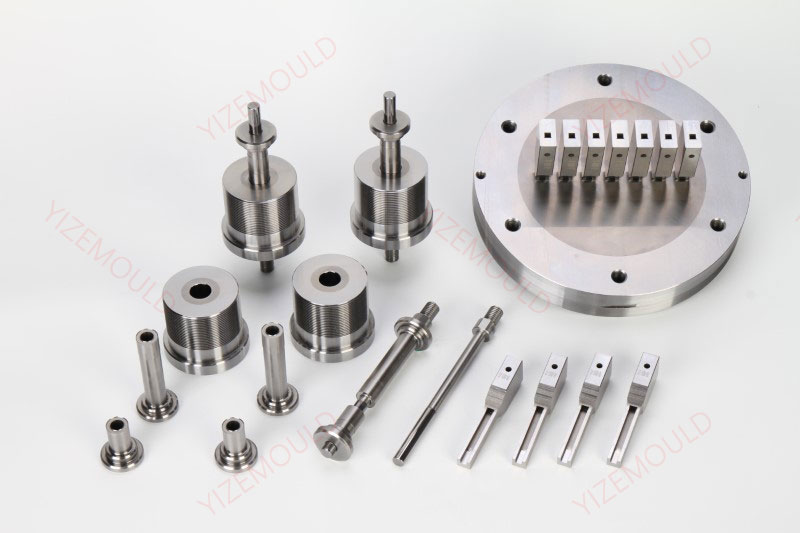Can carbide be welded?
Yes, carbide can be welded, but it requires the expertise of professionals. Most carbide tools are connected to medium carbon steel or low-alloy steel substrates using welding methods (some carbide […]
Yes, carbide can be welded, but it requires the expertise of professionals. Most carbide tools are connected to medium carbon steel or low-alloy steel substrates using welding methods (some carbide are embedded into HSS substrates using hydraulic presses). The welding process is closely related to the performance of carbide, and the quality of welding directly affects the effectiveness of carbide.
Our factory business: carbide parts, mold parts, medical injection molds, precision injection molds, teflon PFA injection molding, PFA tube fittings. email: [email protected],whatsapp:+8613302615729.
Welding characteristics of carbide.
Carbide has the following characteristics, which pose challenges during the welding process:
- High hardness and brittleness: Carbides are typically composed of metal carbide particles (such as tungsten carbide) combined with a metal binder phase, resulting in high hardness and brittleness. This makes the welding process prone to cracking and deformation.
- High melting point: Carbides generally have high melting points, requiring high temperatures for melting, which can lead to material oxidation and annealing.

Welding methods for carbide.
To address the welding challenges associated with carbide, common welding methods include the following:
- Brazing: Brazing is a method of joining carbide by heating the joint and filling it with brazing filler material (such as silver-copper alloy). Brazing has the advantage of low-temperature operation, reducing the thermal impact on carbide. However, the joint strength of brazing may be lower compared to welding.
- Powder Welding: Powder welding involves hot pressing and sintering metal powder (such as titanium powder) together with the carbide joint to form the welded joint. Powder welding can be performed at lower temperatures, reducing the thermal impact on carbide, and it can achieve higher welding strength.
- Laser Welding: Laser welding is a high-energy density welding method that instantly melts and joins the carbide joint using a laser beam’s heat. Laser welding offers advantages such as high precision, small heat-affected zone, and higher welding strength.
Advantages, disadvantages, and applicable materials/scopes of main welding methods.
- Carbide brazing:
- Advantages: Low-temperature operation, minimal thermal impact on carbide.
- Disadvantages: Joint strength may be lower.
- Applicable Materials/Scopes: Suitable for connecting carbide and other metals (such as steel).
- Carbide powder welding:
- Advantages: Lower temperature, higher welding strength.
- Disadvantages: Complex equipment, high process requirements.
- Applicable materials/scopes: Suitable for connecting carbide with metals, ceramics, and other materials.
- Carbide laser welding:
- Advantages: High precision, small heat-affected zone, higher welding strength.
- Disadvantages: Expensive equipment, requires high operational skills.
- Applicable materials/scopes: Suitable for connecting carbide with metals, especially for small and complex-shaped joints.
Quality inspection after welding.
Quality inspection after welding is crucial to ensure the reliability and performance of the welded joint. Here are some common quality inspection methods:
- X-ray inspection: X-ray examination of the welded joint to detect quality issues such as cracks and porosity.
- Ultrasonic testing: Using the propagation and reflection principles of ultrasonic waves to detect internal defects in the welded joint, such as inclusions and porosity.
- Microscopic examination: Microscopic observation of the welded joint to analyze its structure and identify any defects.
- Tensile strength testing: Performing tensile tests to measure the tensile strength of the welded joint and evaluate its strength performance.
The selection of these quality inspection methods depends on the specific requirements and process conditions of the welded joint.
In conclusion, welding carbide is a challenging task. Considering the characteristics of carbide, appropriate welding methods such as brazing, powder welding, and laser welding can be chosen. Each welding method has its advantages, disadvantages, and applicable scopes. After welding, quality inspection is essential to ensure the quality and performance of the welded joint meet the requirements. By selecting the appropriate welding method and implementing effective quality inspection, we can achieve the welding of carbide and ensure the reliability and stability of the welded joint.
Related Posts
- Unveiling the Key Factors Affecting the Lifespan of Tungsten Carbide Bushings
- Tungsten Carbide Punch Maintenance Tips: The Essential Guide to Extending Lifespan
- Comprehensive Analysis of Tungsten Carbide Machining Advantages
- Key Considerations for Using Tungsten Carbide Parts: What You Need to Know!






